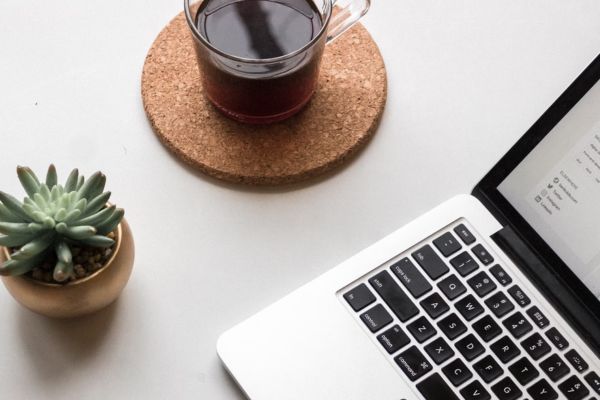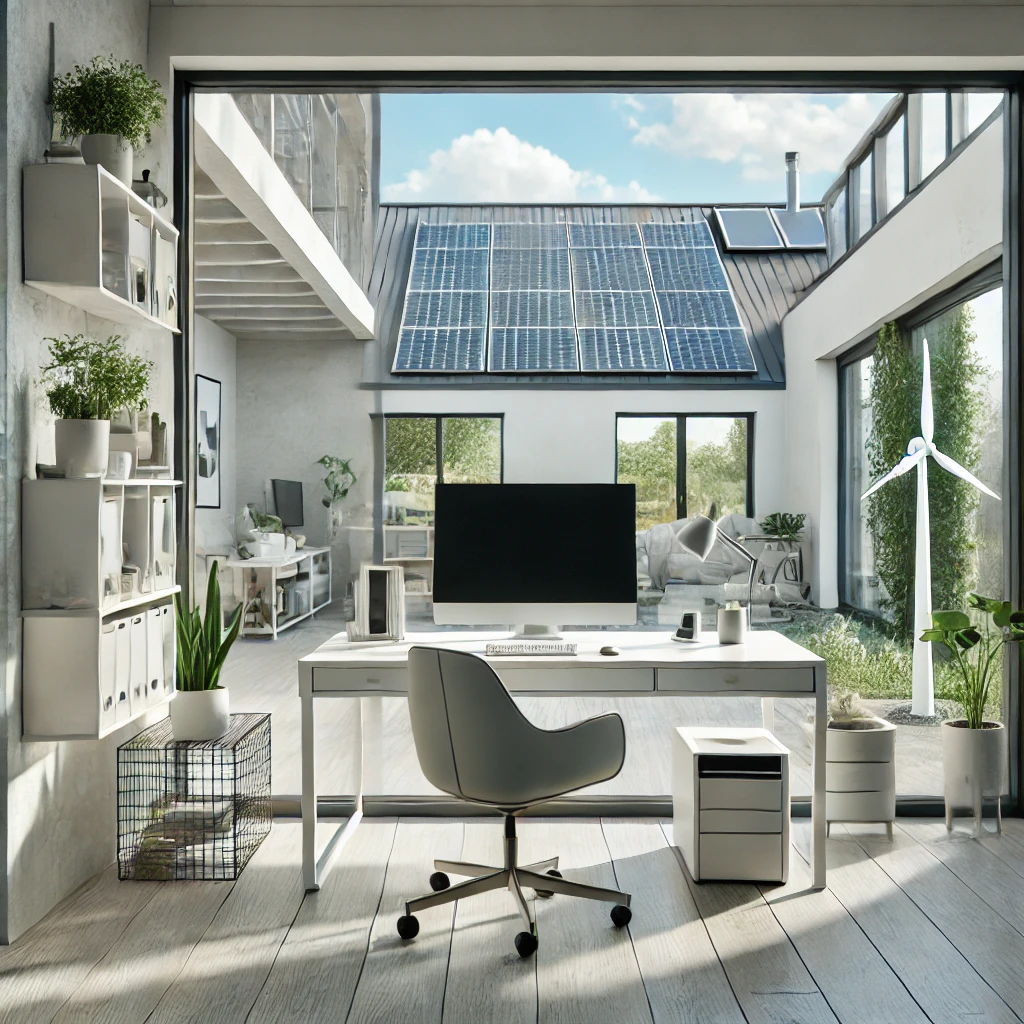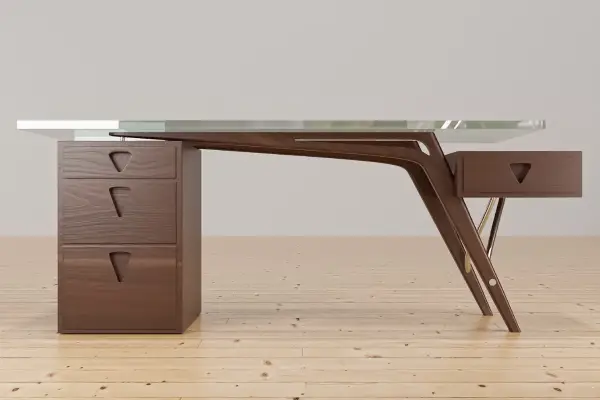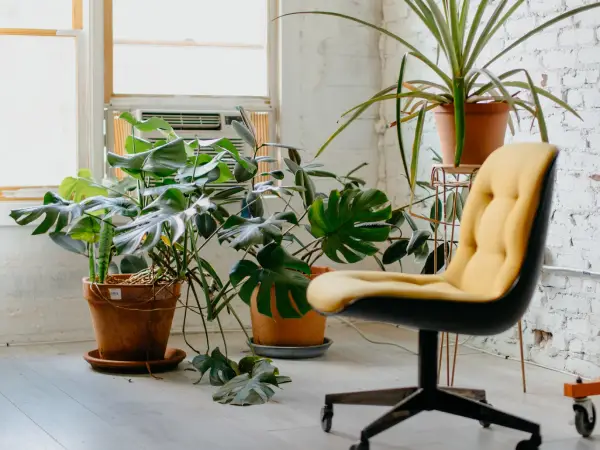Minimalist office design has become increasingly popular due to its clean lines, uncluttered spaces, and focus on functionality. This design philosophy promotes a serene and efficient workspace, free from the distractions of excess decor and unnecessary items. However, while minimalism emphasizes simplicity, it doesn’t mean that your workspace has to be devoid of personality.
Incorporating personal touches into a minimalist office design can enhance your connection to the space, making it more inviting and uniquely yours. Personalization can boost creativity, increase comfort, and improve overall productivity by creating an environment that reflects your individual style and preferences.
The purpose of this article is to guide you through the process of integrating personal elements into your minimalist office. We will explore various ways to add character to your workspace without compromising its clean and organized aesthetic. By thoughtfully selecting and arranging personal items, you can create a functional, stylish, and personalized office that truly feels like your own.
Understanding Minimalist Design
Definition and Principles of Minimalist Design
Minimalist design is characterized by simplicity, functionality, and a focus on essential elements. It embraces the idea that less is more, stripping away excess and leaving only what is necessary. Key principles of minimalist design include:
Clean Lines: Furniture and decor with straight, clean lines create a sleek and uncluttered look.
Neutral Colors: A palette of whites, grays, blacks, and other neutral tones enhances the sense of simplicity and calm.
Open Space: Minimalism values open, airy spaces free from unnecessary furniture and decor.
Functional Decor: Every item in a minimalist space serves a purpose, combining beauty with utility.
Quality Over Quantity: Focusing on a few high-quality items rather than numerous lesser-quality pieces.
The Balance Between Simplicity and Personalization
While minimalist design promotes simplicity and functionality, it’s essential to strike a balance between maintaining a clean, uncluttered space and adding personal touches. Personalizing a minimalist office involves carefully selecting items that reflect your personality without overwhelming the space. This balance ensures that the office remains conducive to productivity while feeling uniquely yours.
Benefits of a Minimalist Office
A minimalist office offers several benefits that contribute to a more efficient and pleasant working environment:
Reduced Clutter: An uncluttered workspace minimizes distractions, allowing for better focus and productivity.
Enhanced Organization: With fewer items to manage, keeping the office organized becomes more straightforward.
Calm and Tranquil Environment: The simplicity of minimalist design fosters a serene atmosphere, reducing stress and promoting mental clarity.
Easier Maintenance: A minimalist office is easier to clean and maintain, saving time and effort.
Timeless Aesthetic: Minimalist design has a timeless quality, ensuring that your office remains stylish and relevant over the years.
By understanding the principles and benefits of minimalist design, you can create a foundation that supports both functionality and personalization in your office. The next section will delve into identifying personal touches that can be seamlessly integrated into your minimalist workspace, allowing you to add character without compromising the overall aesthetic.
Identifying Personal Touches
Definition of Personal Touches in Decor
Personal touches in decor refer to the unique elements that reflect your personality, interests, and memories. These items transform a generic space into one that feels truly yours, making it more comfortable and inviting. In the context of a minimalist office, personal touches should be carefully chosen to enhance the space without creating clutter. The goal is to add meaningful and aesthetically pleasing items that resonate with you and contribute to a productive work environment.
Examples of Personal Items to Incorporate
Incorporating personal items into your minimalist office can be done in various subtle and impactful ways. Here are some examples:
Photos
Personal photos can add warmth and a sense of familiarity to your office. Choose a few favorite photos that inspire or motivate you. Opt for simple frames that match your minimalist aesthetic. Consider creating a small photo gallery on a single wall or a single photo displayed prominently on your desk.
Artwork
Artwork is a great way to express your personality and taste. Select pieces that you love and that fit the minimalist theme—think clean lines, abstract designs, or monochromatic palettes. One or two carefully chosen pieces can make a significant impact without overwhelming the space.
Souvenirs
Souvenirs from travels or special events can add a personal touch to your office. Select items that have personal significance and that are visually appealing. Keep it minimal by choosing only one or two items and placing them strategically on shelves or your desk.
Choosing Functional Personal Items
Personal items can also be functional, adding to both the aesthetic and practical aspects of your office. Here are some ideas for incorporating functional personal touches:
Custom Stationery
Using custom stationery or notebooks can make your work feel more personalized. Opt for designs that reflect your style while maintaining the minimalist theme. Simple, elegant designs with your initials or a favorite quote can be both useful and inspiring.
Personalized Desk Accessories
Personalized desk accessories, such as a custom mouse pad, a unique pen holder, or a monogrammed desk mat, can add a touch of individuality to your workspace. Choose items that blend seamlessly with your office decor while adding a bit of personal flair.
Unique Lighting Fixtures
Lighting fixtures can serve as both functional and decorative elements. Select a lamp or light fixture that reflects your personal taste, whether it’s a sleek modern design, a vintage piece, or something with a bit of character. Ensure it provides adequate lighting for your tasks while adding to the overall aesthetic of the office.
By thoughtfully selecting and incorporating personal items, you can add character and warmth to your minimalist office without compromising its clean and organized look. The next section will explore how to integrate personal colors and textures to further personalize your workspace while maintaining the minimalist aesthetic.
Choosing Functional Personal Items
Selecting Personal Items That Serve a Purpose
In a minimalist office, every item should have a function, even those that add a personal touch. By choosing personal items that also serve a practical purpose, you can maintain the clean and efficient aesthetic of minimalism while making the space feel uniquely yours. Here are some tips for selecting functional personal items:
Dual-Purpose Decor: Look for items that are both decorative and functional, such as a beautiful clock that also serves as a timepiece, or a stylish bookshelf that holds both books and decorative objects.
Personalized Essentials: Opt for personalized versions of everyday office essentials like a mouse pad, desk mat, or notepad. These items add a personal touch without adding clutter.
Examples of Functional Personal Touches
Custom Stationery
Custom stationery can be a subtle yet effective way to personalize your minimalist office. Consider items such as:
Notebooks: Choose notebooks with your initials, favorite quotes, or custom designs that inspire you. Look for options with clean, minimalist designs that fit the overall aesthetic of your office.
Pens and Pencils: High-quality pens and pencils that you enjoy using can add a touch of luxury and personalization to your workspace. Opt for sleek, elegant designs that complement your minimalist decor.
Personalized Desk Accessories
Desk accessories that reflect your personal style can enhance both the functionality and appearance of your office. Some ideas include:
Pen Holders: A unique pen holder, perhaps made from a material you love or in a design that speaks to you, can be a simple way to add personality. Consider options like marble, wood, or metal for a minimalist look.
Desk Organizers: Customized or stylish desk organizers can keep your workspace tidy while adding a personal touch. Look for modular designs that can be configured to suit your needs.
Mouse Pads: A custom mouse pad with a design that resonates with you can make your workspace feel more personal. Opt for designs that are simple and align with your minimalist theme.
Unique Lighting Fixtures
Lighting is a critical element in any office, and choosing a unique fixture can add both functionality and personality. Consider these options:
Desk Lamps: Select a desk lamp that not only provides adequate lighting but also reflects your personal taste. Whether you prefer a sleek modern design, a vintage piece, or something with artistic flair, the right lamp can serve as a functional statement piece.
Ambient Lighting: Use ambient lighting, such as LED strips or floor lamps, to create a comfortable and inviting atmosphere. Choose designs that blend well with your minimalist decor while adding a touch of your personal style.
By incorporating functional personal items into your minimalist office, you can create a workspace that is both practical and reflective of your personality. The next section will explore how to integrate personal colors and textures into your office decor, enhancing the minimalist aesthetic while adding depth and character.
Integrating Personal Colors and Textures
Using Favorite Colors Within a Minimalist Palette
A minimalist office doesn’t have to be devoid of color. By integrating your favorite colors in subtle and thoughtful ways, you can add personality to your workspace without compromising its simplicity. Here are some tips for using personal colors within a minimalist palette:
Accent Colors: Choose one or two of your favorite colors to use as accents. These can be incorporated through small decor items like cushions, desk accessories, or a single piece of artwork. Stick to a restrained palette to maintain a clean, cohesive look.
Neutral Base: Start with a neutral base of whites, grays, or beiges, and add pops of color sparingly. This approach ensures that the space remains open and uncluttered while allowing your personal style to shine through.
Incorporating Personal Textures and Materials
Textures and materials play a significant role in creating a tactile and visually interesting space. Here are some ways to incorporate personal textures and materials into your minimalist office:
Soft Textures: Introduce soft textures through items like throw pillows, rugs, and curtains. Choose materials that you find comforting and appealing, such as wool, linen, or velvet. These elements can add warmth and softness to your office without overwhelming the minimalist aesthetic.
Natural Materials: Use natural materials like wood, stone, or metal to add a sense of authenticity and earthiness to your space. A wooden desk, stone paperweight, or metal lamp can serve as focal points that reflect your personal taste while maintaining the minimalist design.
Layering Textures: Layering different textures can create depth and interest. For example, combine a smooth leather chair with a chunky knit blanket or pair a sleek metal lamp with a woven basket for storage.
Examples of Integrating Colors and Textures
Throw Pillows
Throw pillows are an easy and effective way to introduce color and texture into your office. Choose pillows in your favorite colors and with textures that you love. For instance, a soft blue linen pillow or a mustard yellow velvet cushion can add a personal touch while complementing a neutral sofa or chair.
Rugs
A well-chosen rug can anchor your space and add both color and texture. Opt for a rug in a subtle pattern or a single color that reflects your style. Natural fibers like wool or jute can enhance the minimalist look while providing a cozy underfoot feel.
Wall Art
Wall art is another excellent way to integrate personal colors and textures. Select pieces that resonate with you, whether it’s a minimalist abstract painting, a black-and-white photograph, or a simple line drawing. The frame material can also add texture—consider wood, metal, or even acrylic for a modern touch.
Tips for Integrating Colors and Textures
Consistency: Maintain consistency in your color and texture choices to create a harmonious look. For example, if you choose a certain shade of blue as an accent color, repeat it in various elements like pillows, a rug, and a piece of art.
Balance: Balance bolder colors and textures with more subdued elements to prevent the space from feeling cluttered. For instance, if you have a richly textured rug, keep the surrounding decor simpler and more neutral.
Subtlety: Embrace subtlety by incorporating colors and textures in small doses. This approach allows you to personalize your space without disrupting the minimalist aesthetic. A few carefully chosen items can make a significant impact.
By thoughtfully integrating personal colors and textures, you can add depth, warmth, and individuality to your minimalist office. This enhances the overall aesthetic while ensuring that the space feels uniquely yours. The next section will explore how to personalize your office with greenery, adding a touch of nature and vitality to your workspace.
Personalizing with Greenery
Benefits of Adding Plants to a Minimalist Office
Incorporating plants into your minimalist office design offers numerous benefits that extend beyond aesthetics. Here are some of the key advantages:
Improved Air Quality: Plants can help purify the air by removing toxins and releasing oxygen, creating a healthier work environment.
Enhanced Mood and Productivity: Studies have shown that having plants in the office can reduce stress, boost mood, and increase productivity.
Aesthetic Appeal: Greenery adds a natural element that can soften the clean lines of minimalist design, bringing life and color to the space.
Choosing Plants That Reflect Personal Style
Selecting plants that align with your personal style and the minimalist aesthetic is crucial. Here are some tips for choosing the right plants:
Low-Maintenance Options: Opt for plants that are easy to care for, such as succulents, cacti, or snake plants. These require minimal watering and maintenance, making them ideal for a busy office environment.
Elegant Shapes: Choose plants with clean, simple lines that complement the minimalist design. For example, a tall, slender fiddle leaf fig or a compact ZZ plant can add visual interest without overwhelming the space.
Personal Favorites: Incorporate plants that you personally enjoy and find inspiring. Whether it’s a specific type of flower, a favorite herb, or a unique-looking foliage plant, select greenery that resonates with you.
Tips for Incorporating Greenery Without Clutter
Maintaining the minimalist aesthetic while adding plants requires careful consideration of placement and arrangement. Here are some strategies:
Single Statement Plant: Use a single, larger plant as a focal point in the room. A tall plant in a simple, elegant pot can make a significant impact without adding clutter.
Grouped Plants: Group smaller plants together in a designated area, such as a windowsill, shelf, or corner of the desk. Use matching or complementary pots to create a cohesive look.
Hanging Plants: Utilize vertical space by incorporating hanging plants. Macrame hangers or sleek wall-mounted planters can add greenery without taking up valuable desk or floor space.
Minimalist Planters: Choose planters that reflect the minimalist aesthetic. Look for simple, unadorned designs in neutral colors or natural materials like terracotta, ceramic, or metal.
Examples of Incorporating Greenery
Desk Plants
Small desk plants can add a touch of nature to your immediate workspace. Consider succulents, air plants, or a small potted herb like basil or mint. These plants are easy to care for and can thrive in a variety of light conditions.
Floor Plants
For a more substantial statement, place a larger floor plant in a corner of the room. A monstera, rubber plant, or peace lily can add height and visual interest while maintaining the clean lines of minimalist design.
Wall-Mounted Planters
Wall-mounted planters are perfect for adding greenery without sacrificing desk or floor space. Install a few planters in a grid pattern or staggered arrangement to create a living wall that serves as a focal point.
By thoughtfully selecting and placing plants, you can enhance your minimalist office with greenery that reflects your personal style and adds numerous benefits to your workspace. The next section will explore DIY and customized elements to further personalize your office while maintaining its minimalist aesthetic.
DIY and Customized Elements
Creating Your Own Minimalist Wall Art
One of the most effective ways to personalize your minimalist office is through DIY wall art. Not only does this allow you to create something unique, but it also ensures that the artwork aligns perfectly with your personal style and the minimalist aesthetic. Here are some ideas for DIY minimalist wall art:
Abstract Paintings: Use a canvas and a few simple colors to create abstract designs. Focus on clean lines, geometric shapes, and a limited color palette to keep it minimalist.
Typography Art: Create prints featuring your favorite quotes or motivational phrases. Use simple, elegant fonts and stick to black and white or muted colors.
Nature-Inspired Art: Collect leaves, flowers, or other natural elements and frame them in a simple frame. This adds a touch of nature and personal flair to your office.
Affordable Sources for Purchasing Minimalist Art
If DIY isn’t your thing, there are plenty of affordable options for purchasing minimalist art that can add a personal touch to your office. Here are some sources to consider:
Online Marketplaces: Websites like Etsy, Society6, and Redbubble offer a wide range of minimalist art prints created by independent artists. You can find unique pieces that reflect your personal taste without breaking the bank.
Printable Art: Many artists sell downloadable art prints that you can print yourself. This option is often more affordable than purchasing a physical print and allows you to choose the size and type of paper.
Local Art Shows and Markets: Visiting local art shows or markets can be a great way to find unique and affordable minimalist art. Plus, you’ll be supporting local artists and getting a piece with a story behind it.
Repurposing and Upcycling Existing Art Pieces
Another cost-effective and environmentally friendly way to personalize your office is by repurposing or upcycling existing art pieces. Here are some ideas:
Reframing Art: Give old art pieces a fresh look by replacing the frames. Choose simple, modern frames that match your minimalist aesthetic.
Painting Over Canvases: If you have old canvases that you no longer love, consider painting over them with new minimalist designs. Abstract shapes, simple lines, or monochromatic patterns can transform outdated art into something fresh and modern.
Collage Art: Create a new piece of art by combining elements from several old pieces. Cut out interesting shapes or sections and arrange them into a new, cohesive design.
By incorporating DIY projects, affordable purchases, and repurposed items, you can add personalized elements to your minimalist office without spending a lot of money. These unique touches will make your workspace feel more like your own while maintaining its clean and organized aesthetic. The next section will provide tips for maintaining and preserving the quality of your wall art, ensuring that your personalized decor remains in top condition.
Maintenance and Longevity
Tips for Preserving the Quality of Wall Art
To keep your minimalist office looking fresh and your wall art in pristine condition, it’s important to take steps to preserve its quality. Here are some tips to ensure your art pieces stay beautiful over time:
Proper Framing: Invest in high-quality frames that provide adequate protection for your art. Use UV-protective glass or acrylic to prevent fading from sunlight exposure.
Avoid Direct Sunlight: Hang your artwork in areas where it won’t be exposed to direct sunlight, which can cause colors to fade and materials to deteriorate.
Humidity Control: Keep your office environment at a stable humidity level to prevent warping, mold, and other damage. Use a dehumidifier if necessary, especially in areas with high humidity.
Cleaning and Maintaining Artwork
Regular cleaning and maintenance are essential for keeping your artwork in top condition. Here are some best practices:
Dusting: Gently dust your framed art and canvases with a soft, dry cloth or a microfiber duster to remove any surface dust. Avoid using water or cleaning solutions, as they can damage the artwork.
Glass and Acrylic Cleaning: For artwork protected by glass or acrylic, use a gentle glass cleaner and a soft cloth to clean the surface. Spray the cleaner on the cloth, not directly on the glass, to prevent liquid from seeping into the frame.
Canvas Care: For canvas pieces, avoid touching the surface with your fingers, as oils and dirt can transfer and cause damage. If the canvas becomes dirty, consult a professional conservator for advice on safe cleaning methods.
Rotating and Updating Wall Art for a Fresh Look
To keep your minimalist office feeling fresh and inspiring, consider periodically rotating and updating your wall art. Here are some strategies:
Seasonal Changes: Swap out your artwork seasonally to reflect changes in mood, color palette, or inspiration. This can keep your workspace dynamic and aligned with the time of year.
Themed Rotations: Rotate art based on themes or projects you’re working on. For example, if you’re starting a new creative project, choose pieces that inspire and motivate you.
Mix and Match: Combine old and new pieces to create different arrangements. This can give your office a refreshed look without the need to purchase entirely new artwork.
Storage Solutions: Invest in proper storage solutions for artwork that you’re not currently displaying. Use acid-free materials and store in a cool, dry place to ensure pieces remain in good condition when not in use.
By following these tips for maintenance and longevity, you can ensure that your personalized wall art remains a vibrant and integral part of your minimalist office design. Regular care and thoughtful rotation will keep your workspace inspiring and visually appealing. The final section will recap the key points discussed in this article and encourage you to experiment with personalizing your minimalist office.
Final Words
Recap of Key Points
Incorporating personal touches into a minimalist office design involves a careful balance between simplicity and personalization. By understanding the principles of minimalist design, selecting functional and personal items, integrating personal colors and textures, adding greenery, and choosing DIY or affordable art options, you can create a workspace that is both stylish and uniquely yours. Additionally, maintaining and rotating your wall art ensures that your office remains fresh and inspiring over time.
Encouragement to Experiment and Personalize
Your office should be a reflection of your personality and a space that inspires productivity and creativity. Don’t be afraid to experiment with different elements and find what works best for you. Personalizing your minimalist office is an ongoing process, and it’s important to allow your space to evolve with your tastes and needs.






